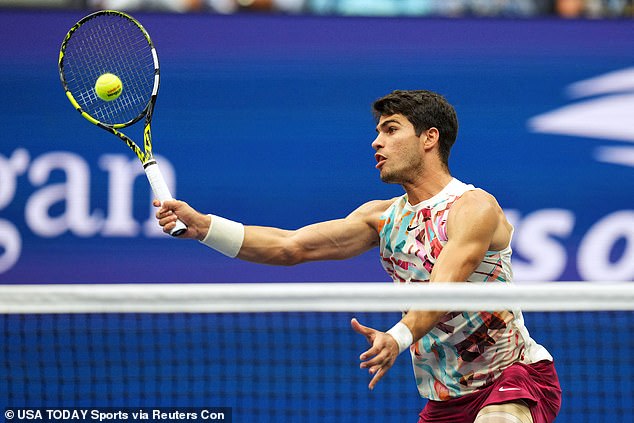Fresh from his triumph at the US Open, securing his return to the coveted World No. 1 ranking, Carlos Alcaraz delivered a statement that might strike some as remarkably understated: “You haven`t seen the best Carlos yet.” For a player who, at just 22 years old, has already claimed multiple Grand Slam titles and ascended to the pinnacle of men`s tennis, this assertion isn`t mere bravado. It`s a calculated, almost technical, declaration of intent, a glimpse into the relentless mindset of a true sporting prodigy.
The Champion`s Paradox: Success as a Stepping Stone
Alcaraz`s recent Flushing Meadows victory over rival Jannik Sinner was a spectacle of power, precision, and raw athleticism. Yet, when questioned about this being his definitive form, the Spaniard remained pragmatic. “I feel I am at the best of my career so far, but I still have room for improvement. I have not yet reached 100%, and I am working to get there,” he explained to the Spanish press. This is a fascinating paradox: to achieve so much, yet perceive oneself as operating below peak efficiency. It`s not humility; it`s the insatiable drive of an elite athlete who views every achievement not as a destination, but as a waypoint on a much longer, more ambitious journey. To suggest, at 22, that one`s ultimate version is still nascent is, in its own way, an audacious promise to the tennis world.
The Dual Force: Alcaraz vs. Sinner and the Evolution of Rivalry
Central to Alcaraz`s narrative of continuous improvement is his electrifying rivalry with Jannik Sinner. Their encounters have quickly become marquee events, showcasing a blend of youthful exuberance and tactical sophistication. Alcaraz openly acknowledges the dynamic: “The ball is not in his court now; he has to improve something to be able to beat me. And I have to be ready to see what he does differently.” This isn`t an insult; it`s a technical assessment and a respectful challenge. The beauty, as Alcaraz sees it, lies in this mutual push. Both players are forced to evolve, to dissect their games and their opponent`s, continually refining their strategies and techniques. It`s a symbiotic relationship, driving both to explore the outer limits of their potential. The tennis world eagerly anticipates Sinner`s response, knowing that whatever adjustments he makes, Alcaraz will be diligently preparing his counter-strategy.
Beyond the Court: The Art of Balance
Even champions, particularly young ones, are not immune to enjoying the fruits of their labor. Alcaraz addressed the public perception of his post-victory celebrations with a candid, almost charming, shrug. “It`s true, I like to enjoy life, but who doesn`t like it? Who hasn`t had fun at 22?” he mused. His explanation is simple, yet effective: it`s about quality time off-court, ensuring he returns to tournaments motivated. This pragmatism extends to his professional goals. Achieving the World No. 1 ranking was his declared objective for the season, a target he has now met with a remarkable tally of seven titles and 67 match wins. The pride in his high-level play, especially during the US Open, is evident, but it`s tempered by a clear understanding of the road ahead.
The Unattainable Peak: A Philosophy of Perpetual Growth
Alcaraz`s commitment to continuous improvement isn`t merely a tactic; it`s a core philosophy. “How do I stay grounded? I know there is always room for improvement. Someone else, another player, even Jannik, will always come along who will surpass me or be better. And we must keep going, training, improving,” he stated. This perspective is crucial for sustained excellence. It acknowledges the transient nature of dominance in elite sports and the ever-present threat of emerging talent. The concept of “perfection” is not a finish line but a horizon that constantly recedes, pushing him to chase a better version of himself. For Carlos Alcaraz, the journey to becoming “the best Carlos” is less about achieving an ultimate state and more about the endless pursuit of it.
As the tennis season continues, the declaration from Carlos Alcaraz offers a tantalizing prospect. If his current, already spectacular, form is merely a precursor, then the future of men`s tennis, particularly with his ongoing dance with Jannik Sinner, promises to be nothing short of legendary. The “best Carlos” might still be an abstraction, but the process of its emergence is already compelling viewing.

